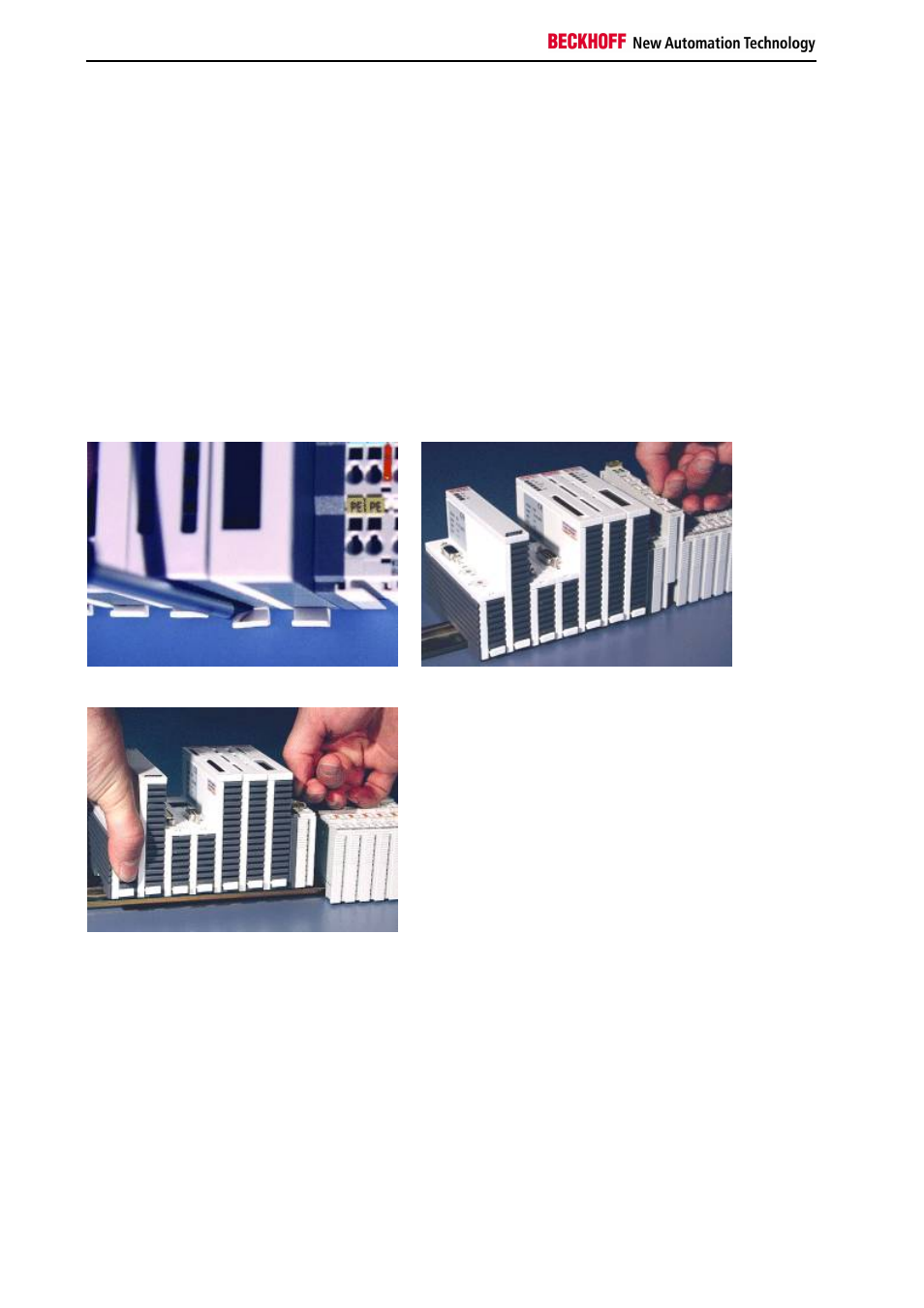Decommissioning – BECKHOFF CX1000 User Manual
Page 46

Decommissioning
44
Embedded PC
6. Decommissioning
Removal and disposal
A CX1000 hardware configuration is dismantled in 2 stages:
1. Removing from the top-hat rail:
The white straps on the underneath of all the modules must be pulled downwards (FIG 1). This can be done using an
ordinary screwdriver and a slight turn. The latching mechanism that provides fixing to the top-hat rail opens up (this
procedure is not visible).
If the configuration has a power supply unit with an I/O interfaces, it is first necessary to release the first terminal from
the top-hat rail (FIG 2) so that the CX1000 configuration can be separated from the I/O hardware, allowing the
module to be removed from the top-hat rail (FIG 3).
FIG 1: Straps down
FIG. 2: Releasing the I/O terminal from the top-hat rail
FIG. 3: Separating the module from the top-hat rail
2. Separating the individual modules:
Before separating the individual modules from one another, the entire CX1000 hardware block must first be removed
from the top-hat rail, as described in Step 1. The individual modules can then be separated from one another by
means of the separation mechanism mounted on the rear, as shown in Fig 4. This is done by inserting a flat
screwdriver with dimensions 1.0 x 5.5 x 150 mm into the locking mechanism, and then operating the slider by turning
it about 90 degrees. The rear-mounted locking mechanism creates a separation of approx. 2-3 mm in the mechanical
engagement of the modules, pushing them apart, so that the PC 104 interface connectors can then carefully be
pulled apart (FIG 5). Modules that cannot be separated from one another do not have a slider slot, but merely a
marking point (which may or may not be sealed with red lacquer). Applying force to these elements will destroy them.
